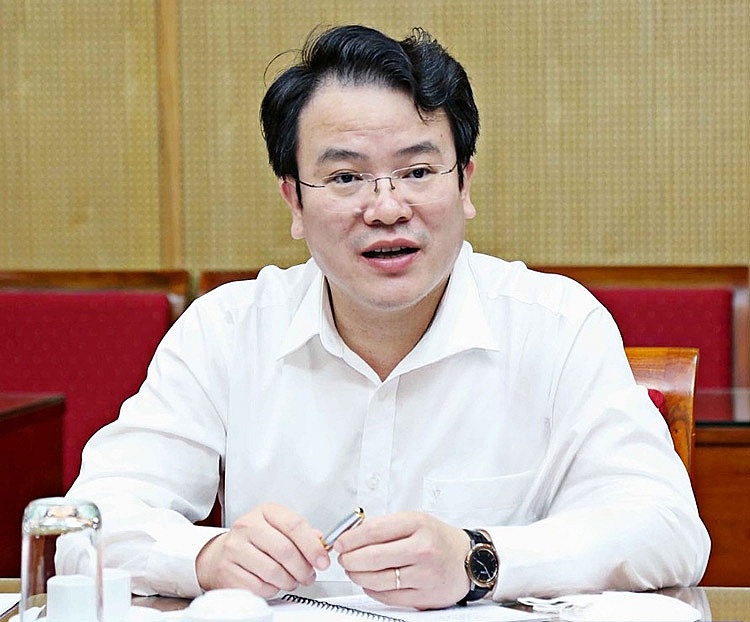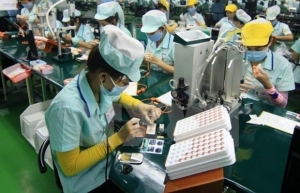Setting a strong impression for socioeconomic advances
Can you provide some assessment of the public investment in the year so far?
The Ministry of Planning and Investment (MPI) reported that the disbursement amount by June 30 is estimated at nearly VND215.6 trillion ($9.2 billion), equivalent to 30.49 per cent of the yearly plan, higher than the same period in 2022 (at 27.75 per cent). The value is $2.8 billion more than last year, reflecting a positive change in the disbursement of public investment.
 |
| Deputy Minister of Planning and Investment Tran Quoc Phuong |
The reason for the improvement is that we have swiftly implemented solutions on disbursement right from the beginning of the year. This also confirms the efforts of authorities at all levels in disbursing investment.
The public investment plan in 2023 has a large volume of about $30.2 billion, including planned capital for the year and additional funds from the socioeconomic recovery and development programme. This is a huge task in the second half of the year, requiring authorities at all levels and sectors to continue to make efforts to carry out solutions strongly to disburse at least 95 per cent of the plan.
Since 2021, almost all disbursement progress has hit more than 90 per cent. This is the basis for us to be confident in achieving the goals set.
Furthermore, many key transportation projects have started, which is a good signal. As starting construction of a project, the entire disbursement of the first phase of the project will be spent on site clearance, with a large amount of capital to immediately pay to the people. So, the disbursement of public investment will go quickly.
In addition, the National Assembly (NA) has decided to loosen the disbursement of public investment and allow the allocation of medium-term capital sources to projects in the programme on socioeconomic recovery and development (PSRD). There will be more projects to implement and spend.
Moreover, the NA has also allowed the flexible harmonisation of the capital of the PSRD, and the medium-term investment plan projects, striving to disburse all public investment plans in 2023.
Based on GDP growth of 3.72 per cent in the first half, can you forecast socioeconomic development for the rest of the year?
The MPI has reported fully on socioeconomic development in the first half and on measures and solutions for the second half. There are two scenarios for GDP growth.
Scenario 1 sees GDP for the whole year expected to increase by 6 per cent, the growth in the third quarter must reach 6.8 per cent, and the fourth quarter is 9 per cent, 0.3 and 1.9 percentage points respectively higher than the scenario given at the beginning of the year. In this scenario, in the second half, GDP growth must reach 8 per cent.
In the second scenario 2, GDP in 2023 will increase by 6.5 per cent. Therefore, the last two quarters of the year must achieve growth of 7.4 and 10.3 per cent. In general, growth in the second half of the year has to be at 8.9 per cent. Reaching the growth rate of 6.5 per cent for the whole year will be a huge challenge.
Has the MPI got any solutions to deal with these issues and reach the yearly targets as closely as possible?
Based on the results of 27 government delegations working with localities, the MPI has drafted a special thematic resolution for the second half of the year.
A resolution on ensuring the macroeconomy promotes growth, and strengthens discipline and administrative reform has also been submitted to relevant authorities for feedback. We will then explain and finalise the draft resolution to submit to the government for consideration. This is also a resolution focusing on solutions to achieve socioeconomic growth until the end of the year.
There are a few key issues and solutions. Firstly, the global situation is changing very fast, so the prime minister highlights the role of forecast and analysis. The MPI has also set a number of key tasks for ministries and agencies, especially those related to international markets, to closely grasp the global situation and promptly propose flexible response solutions.
The second group of solutions is to maintain macroeconomic stability, which is the fundamental factor in ensuring economic growth. This group of solutions focuses on continuing to administer goods, fiscal and monetary policy, and asks the State Bank of Vietnam to continue controlling lending interest rates to stimulate and unlock capital for the economy as well as implementing solutions to support fiscal policy.
These solutions are not too difficult to implement because the pressure on inflation has decreased significantly. The consumer price index in the first half was 3.29 per cent, far from the yearly target of 4.5 per cent.
The third group is to review all growth drivers to strengthen them, remove obstacles for businesses, and increase the motivation for growth. This includes boosting domestic consumption, encouraging investment, accelerating the disbursement of capital, and tightening administrative discipline.
 | Disbursement of assistance to be bolstered for enterprises The country’s hallmark socioeconomic recovery and development initiative must be accelerated as implementation continues to be too slow, the government has acknowledged. |
 | Human resources a driving force for southeastern region’s development: Official The southeastern region needs long-term planning and strategy for human resources development to meet the demands of industries during its socioeconomic development towards 2030 with a vision to 2045, an official has said. |
 | JICA signs ODA loans for socioeconomic development The Japan International Cooperation Agency (JICA) on July 4 signed three loan agreements with the Vietnamese government of Vietnam to provide three official development assistance (ODA) loans worth up to $421 million in total over three years. |
What the stars mean:
★ Poor ★ ★ Promising ★★★ Good ★★★★ Very good ★★★★★ Exceptional
Related Contents
Latest News
More News
- Global partnerships key to Vietnam’s IFC development (December 26, 2025 | 16:18)
- Vingroup pulls out of bid to invest in North-South high-speed railway (December 26, 2025 | 11:42)
- Strengthening supply chains through trade promotions and customs reform (December 24, 2025 | 14:00)
- PM orders investment model for North–South high-speed rail (December 22, 2025 | 17:43)
- LS Eco Energy to invest in Vietnam rare earth sector (December 22, 2025 | 17:31)
- Government moves to establish International Financial Centre (December 21, 2025 | 21:00)
- Vietnam's IFC to target global investment flows (December 21, 2025 | 18:00)
- Two national hospitals expand capacity with new facilities (December 20, 2025 | 09:00)
- Ha Tinh breaks ground on major Vingroup industrial and energy projects (December 19, 2025 | 18:24)
- EVN launches major power infrastructure projects nationwide (December 19, 2025 | 18:17)

 Tag:
Tag:





















 Mobile Version
Mobile Version